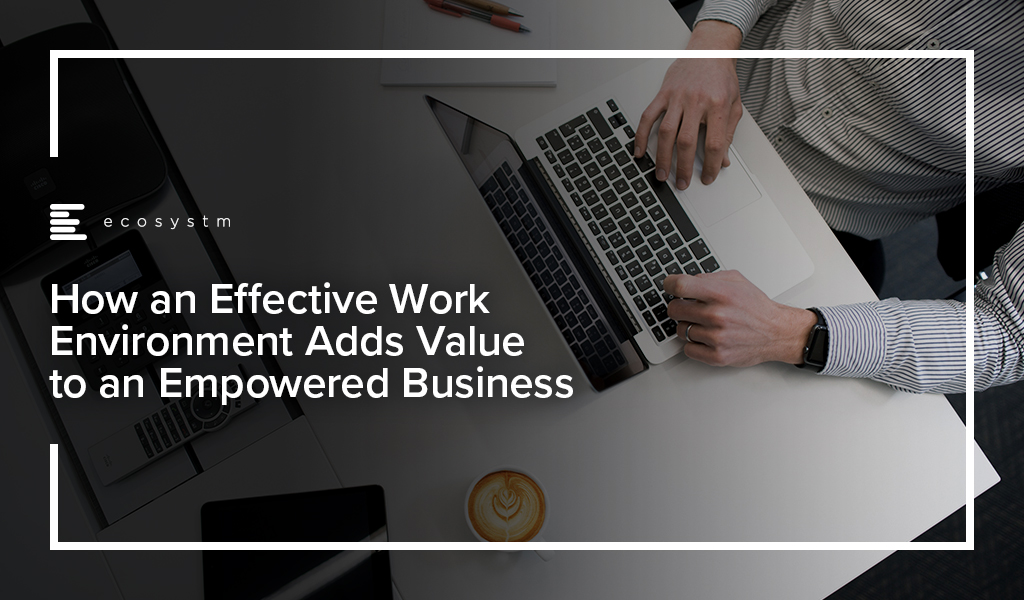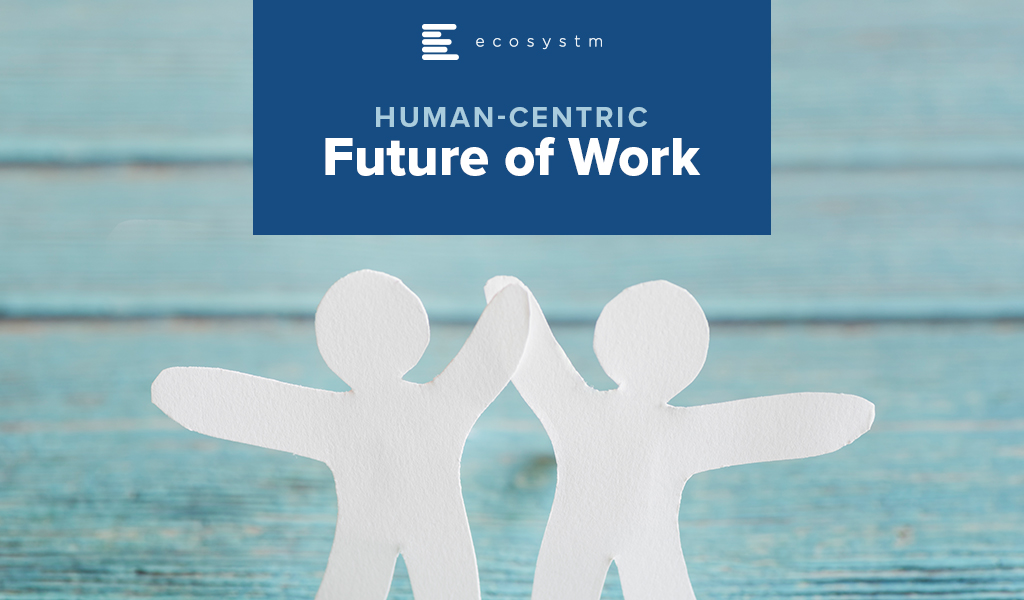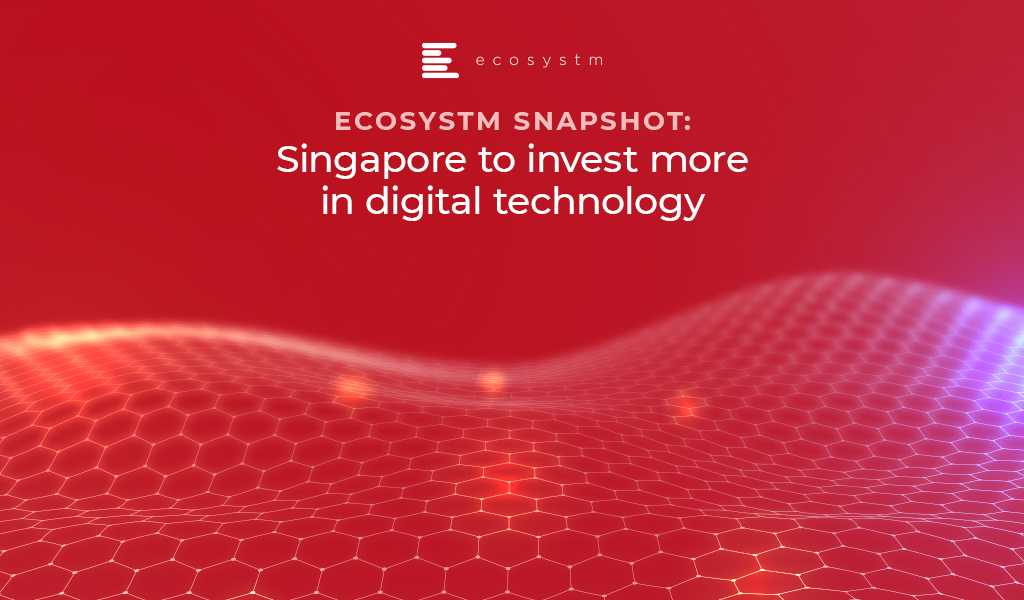Ecosystm research shows that nearly 60% of organisations globally are aiming to recover in 2021. If your organisation hasn’t returned to pre-pandemic business performance already, there will be pressure to recover this year. If you are a Digital Leader, it is time to look at building a Digital Value Journey.
How do digital leaders shift from providing a cost-focused to a value-focused service? At the CXO Digital Leaders Dialogue series, together with Best Case Scenario, we will be in discussion with leaders who will share their experiences with navigating these challenges.
To learn more, or to register to attend, visit here

The 360o Future of Work practice takes into account the changing business environment, and what companies need to become an “Empowered Business”. It consists of four components: The Business, The People, The Technology, and The Work Environment.
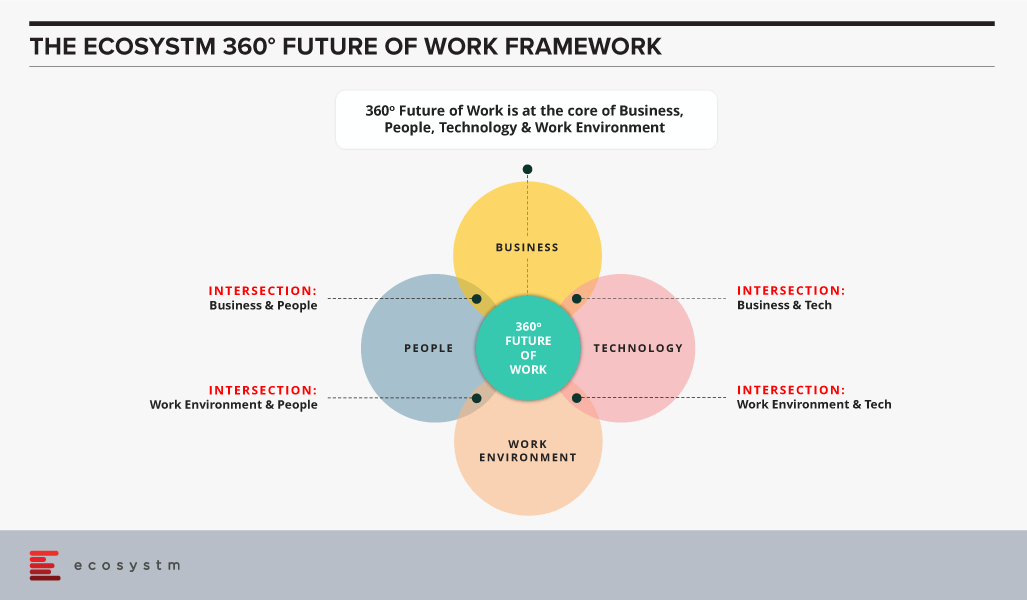
Here we focus on the Work Environment, and its intersection with the three other components.
Work Environment: A Component of the 360o Future of Work
Companies and people have learned work can be performed in many types of environments, just as business is conducted in varying venues. Each space will have a different impact and outcome. The three primary commercial areas are: office, industrial and retail. While industrial and retail commercial areas will be addressed later, we talk here primarily of the office environment. The office environment is designed to enable both collaborative and individual work. It has historically been densely packed. Post COVID-19, this environment will probably be modified. For the past few years, an alternative to the office environment has been co-working – a shared work environment with other companies, in open plan arrangements. It provides a way for business to save capital by minimising the expense of fit out. The combination of using both office and co-working environment is what will begin to be called “the Blended Environment”.
The Work Environment and its Intersections
While the Work Environment is an important component of the Future of Work, it is a co-enabler with Technology to support the People and Business.

Work Environment – Intersection with the Business
The Business’s role is to provide Strategy and Direction. If done effectively it can take on unknown challenges. Examples of how the Business intersects with the Work Environment would be:
- Providing agility to the Business in preparing for any future crises. Some examples of how this can be done is by looking at how the space is controlled by the lease conditions, and how it is used by the occupants and the type.
- Aiding to minimise risk from excess space. An example would be space options for a lease. This will enable both spatial and financial flexibility for the company to expand or contract as needed.
Work Environment – Intersection with People
A critical component of the Empowered Business is its People – its workforce. For any company, the People are the key asset. They have to be able to grow and develop, in order to provide collaboration and idea creation. Examples of how the Work Environment can empower the People would be:
- The focus is on aligning the space with the employee’s task.
- The focus is on aligning where a person needs space to be effective, and the task the person needs to perform.
Work Environment – Intersection with Digital (Technology)
One of the important enablers of any Business, especially the Empowered Business, is its Digital Tools. They support the Business and its People, along with the Work Environment. They allow the Work Environment to be productive and effective. Examples of how Technology and the Work Environment intersect would be:
- This is where the two enablers (Digital Tools and Work Environment) work together to aid the employees and the business.
- This relates to how to manage the Business’s portfolio of space from a remote location.
These four components working together will enable an Empowered Business. The Work Environment as an enabler allows the Business to pivot, adapt, and thrive in the most challenging environment. It allows the Empowered Business to be better prepared to meet future crises head-on.
Schedule a time to speak with us on Future of Work
Ecosystm Principal Advisors; Tim Sheedy & Audrey William (Technology), Ravi Bhogaraju (People & Organisations), and Mike Zamora (Work Environment) provide a holistic view of what the Future of Work will look like.
We enable businesses to adapt, pivot and thrive in their ecosystem; provide holistic access to data and insight across People, Technology and Work Environment; help businesses transform and be better prepared for future disruption, and the ever-changing competitive environment and customer, employee or partner demands.
Contact us through the platform, or over email at info@ecosystm360.com

The Future of Work is here, now. Organisations faced unprecedented challenges of coping with the work-from-home model, when COVID-19 hit earlier this year. Many organisations managed the pivot successfully – but all organisations were impacted in some way.
The COVID-19 crisis has required major resets in how organisations function – across industries and economies. In this environment of intense changes, businesses that have been agile in their operations and their mindsets and were better digitally enabled have thrived, while others have struggled.
Our 360o Future of Work practice focuses on Business, People, Technology and Work Environment. All four are required to work together to enable companies to meet future challenges. The Future of Work enables companies to Pivot, Adapt and Thrive.
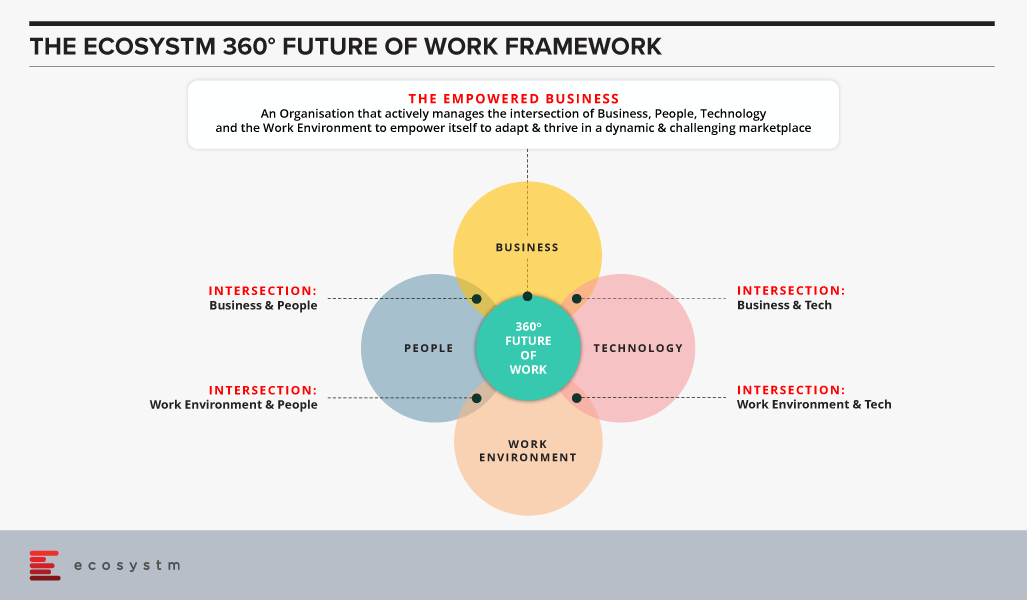
The People practice within the Future of Work helps organisations adapt their People strategies in conjunction with the other areas to drive a holistic approach in the Future of Work strategies.
The Need for Human-centricity
Talent has always been a key company asset that brings product and service offerings to life. HR teams have retained a constant focus on attracting and retaining talent. HR teams have come into sharp focus as the pandemic rages across the world. With the closure of offices and borders, and distancing measures, companies have had to focus their energy on their people and the work infrastructure – almost overnight.
With every passing week, the situation keeps evolving – and so do the ways of managing and engaging with employees and customers. As countries and businesses slowly reopen and modify their distancing protocols the People strategies will have to evolve rapidly.
Every organisation is now grappling with the decision of whether to “reopen” and go back to how things were; or think of alternatives and opportunities that they can capitalise on to strengthen their businesses.
The 4Es of People: Experience Journeys
The cornerstone of the People practice within the Future of Work is to align the Customer Experience and the Employee Journey.
It is not just about finetuning the employee process or employee life cycle in isolation. That is a consequence of the tweaks to the overall journey.
Depending on the phase of the company that you are in (Pivot, Adapt and Thrive) the changes to the employee experience would vary. The 4Es of People is designed to help you make that happen.
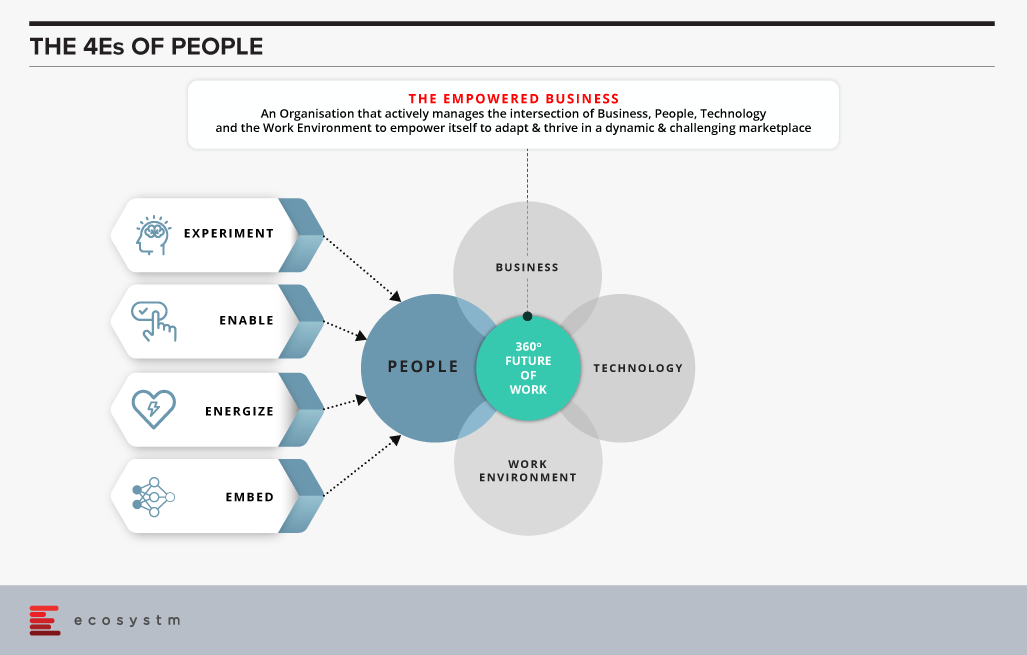
Experiment. HR leaders are increasingly being asked to “orchestrate” companywide experiments to help figure out the way forward. An Experimentation Mindset is crucial to finding the right solutions fast. This needs to be done in a small and holistic way – some examples include thinking of different workforce models, working contracts and benefits, working archetypes, technology and data enablers and workplace models.
Enable. Two main areas of enablement that need to be looked at are: the human elements of talent, capability, leadership and culture to align to the business strategy pivots; and the associated elements of technology, workspace and analytics.
Energize. Key HR competencies of empathy and collaboration are increasingly becoming crucial to ensure that the organisation is staying well, motivated and focused through these demanding times.
Embed. The ability to learn from the experiments, finetune the overall system within and outside the company, and support the changes over the longer term are crucial to help companies scale the models and gain sustained competitive advantage over the mid-term.
The 4Es of People can be effective in adding the right elements and outcomes to support the changes. These are intended to enable HR to help organisation establish their Future of Work strategies and implement them effectively. This will help them to be prepared for whatever model of work becomes prevalent in the future.
Schedule a time to speak with us on Future of Work
Ecosystm Principal Advisors; Tim Sheedy (Technology), Ravi Bhogaraju (People & Organisations), and Mike Zamora (Work Environment) provide a holistic view of what the Future of Work will look like.
We enable businesses to adapt, pivot and thrive in their ecosystem; provide holistic access to data and insight across People, Technology and Work Environment; help businesses transform and be better prepared for future disruption, and the ever-changing competitive environment and customer, employee or partner demands.
Contact us through the platform, or over email at info@ecosystm360.com

On 17 May 2019, the New Zealand Prime Minister Jacinda Ardern and the Singapore Prime Minister Lee Hsien Loong signed a formal arrangement, to step up collaboration in the areas of trade, defence, cybersecurity, science and technology, and arts and culture.
To strengthen cybersecurity, the Cyber Security Agency of Singapore (CSA) and the National Cyber Policy Office (NCPO) of New Zealand inked an agreement on information sharing, cybersecurity and capacity building in the region. A new Cyber Security Arrangement will support greater information exchange, including through an annual cybersecurity dialogue between the two countries. The aim of the agreement is to increase information exchange, prevent incidents and threats and follow best practices on data, infrastructure, and systems protection.
Commenting on the announcement Ecosystm Principal Advisor, New Zealand-based Jannat Maqbool, said, “Engaging internationally on cybersecurity research and initiatives is fundamental given the trans-boundary nature of the cyberspace. As both nations become more digitised and connected, a collaboration will enable each to leverage strengths in key areas to develop a multi-pronged approach to cybersecurity. Both countries will also be in a better position to weigh in on the development of rules-based international order for cyberspace.”
Echoing these comments, Ecosystm Board Advisor, and former Global Head, Digital Development Unit at the World Bank, Randeep Sudan explains how cybersecurity is critical to the growth and development of the digital economy. “Mitigating cyber risks will require coordinated action by multiple stakeholders, including governments, the private sector, academia, and non-governmental organisations,” Sudan says. These bilateral and multilateral G2G partnerships are, therefore, an essential piece in tackling cyber threats. “Given that Singapore and New Zealand are leading players in cyberspace, a G2G collaboration between them will offer learnings of immense value to other governments,” Sudan continues.
Due to Ecosystm’s own close ties with New Zealand, and considering that we are headquartered in Singapore, we are ourselves actively engaged in promoting the dialogue between New Zealand and Singapore. Ecosystm CEO Amit Gupta and Chief Operating Officer, Ullrich Loeffler are in New Zealand this week to participate in Techweek New Zealand (an annual initiative to promote and build awareness for new technologies and innovation in New Zealand) to meet key stakeholders and attend industry events.
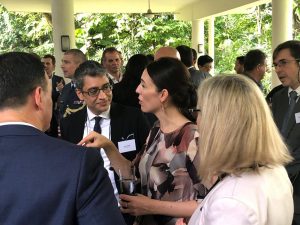 |
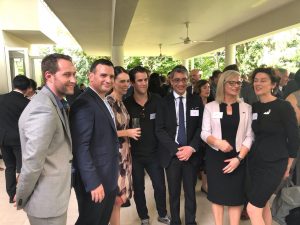 |
Commenting on the sidelines of Techweek, Amit Gupta gave his thoughts on the agreement, “Both New Zealand and Singapore are in hyper-innovation mode at the moment. With the advent of Blockchain and AI especially spurring the growth of the Fintech ecosystem in New Zealand, there is strong potential gains in engaging with the already thriving Singapore Fintech ecosystem.”
New Zealand and Singapore are not only model free markets, but also have been key proponents of data privacy over the years, an area that requires a serious look, as we start to apply new emerging technologies such as AI. “There is an opportunity for these two forward-looking nations to take it a step further to build an actionable Data Privacy Corridor to streamline the Fintech collaboration between them,” Gupta added. “With New Zealand being an export economy and Singapore, a strong services economy, this would enable a much more seamless collaboration between these two countries.”
The collaboration does not end at cybersecurity and Fintech. As part of the partnership, a joint work programme is being negotiated, starting with two flagship collaborations – an advanced data science research platform to build New Zealand’s data science capability; and a food and nutrition cooperative science programme with a focus on ‘future foods’. Both countries have different areas of expertise, and collaborative measures such as these, give them an opportunity to share best practices that will prove mutually beneficial.
The future of food, medicine, and digital technology has been marked as prime research targets to maintain Singapore’s competitiveness in the coming years. Recently, Singapore Government convened a panel discussion on the Research, Innovation and Enterprise (RIE) 2020 plan where Singapore’s Finance Minister Mr Heng Swee Keat delivered an update on Singapore’s science and technology research plan.
Mr. Heng conveyed that more than S$500 million is set-aside to shape up the artificial intelligence systems and to fulfill the nation’s cyber-security requirements. The fund will also improve Singapore’s supercomputing capabilities and the deployment of automation and robotics.
A further $144 million will be allocated towards food research to increase sustainable urban food production, and another $80 million will be contributed to the cell-therapy research in the biopharmaceutical sector.
How Singapore will benefit in terms of technology from this announcement?
The Government has clearly spent a lot of time to determine how to get Singaporean companies to invest in research that can benefit the country, and identifying areas that the industries can benefit in return.
Investment in Digital Technology
The Government believes that it is important to invest in the areas of Artificial Intelligence, Supercomputing and Robotics and hope that there will be more success stories for these industries. The S$500 million set aside will aim to increase the funding already set back in the RIE 2020 for the Digital Intelligence.
Speaking on the subject, Mervyn Cheah, Principal Advisor ,Ecosystm, says that “The Government aims to entice more Industry to invest in R&D in Singapore. PM Lee has mentioned that the industry today is investing just 1.2 to 1.4 of Singapore’s GDP in R&D in Singapore, and he wants the Industry to do more. It is a bit like playing roulette you place your bets on many numbers and hope that one of them will blossom and give you the returns and success. It is not possible that all R&D will come to fruition practically.”
Scenario for Businesses
The RIE 2020 is an initiative taken by the Singapore Government to make the nation a hub for R&D. By setting aside funds for both local industries and MNCs the government hopes that the industries will be able to invest and grow.
“There are a number of new start-ups being created as Singaporeans start to recognise that the government is putting in more R&D funding. At the same time, existing businesses will expand to take advantage of this announcement” says Cheah.
What to Expect – RIE2020
Currently, the local Industries in Singapore do not have a large appetite for investing in R&D in Singapore although there is a 50% spike from 2016 to 2018. The government’s aim is to invest in the Science, Engineering, and Biomedical fields industries, with the intent that they can increase their revenue.
Cheah says “the Government is looking at getting Multi-national Corporations (MNCs) to invest in Singapore for their R&D and believes that the industry can do better. So, the Government (National Research Foundation under the Prime Minister’s Office) is pushing the Industry to do more, and on their pro-active part, they have announced setting aside another S$700 million R&D funding to A*STAR, to the Singapore Food Agency, and other R&D agencies, with the hope that the Industries will further spend R&D in Singapore.”












